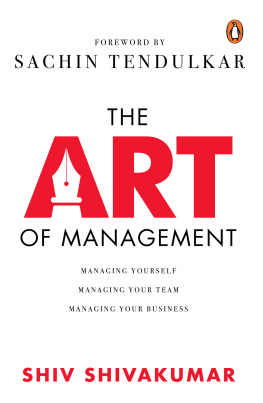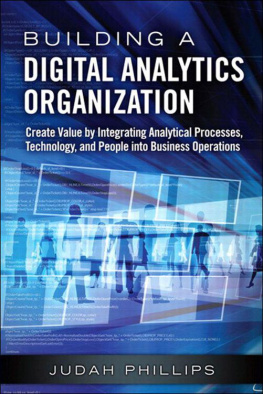The concept of the entrepreneur is one of the most controversial and meaningful in operational and strategic analysis. It is given different meanings, which account for most of the differences in evaluation, especially on performance. Moreover, it should provide a clear explanation of what is meant by spirit of enterprise or entrepreneurial. These definitions should clarify the debates on the fundamental operational act, which is that of creating and starting new businesses. The contractor is the one who makes operational decisions. But the word was charged with meaning to develop the market economy in industrial capitalism and economic thought.
Initially, in the merchant capitalism, the entrepreneur takes part in business transactions (e.g., between the weavers and cloth merchants). The contractor industry supports product manufacturing, committing its capital to buy machinery and organize production. According to Adam Smith, the entrepreneur has above all the virtue of savings and capital mobilization. Jean-Baptiste Say attributed to the contractor the key role of organizing production, a combination of factors, which justifies its profit (which also pays its capital). Thus, the entrepreneur can see that his role is underestimated by liberal economists: for them, the entrepreneur is content to bow to market in its pursuit of profit maximization.
The entrepreneur began to be rehabilitated by the American economists at the beginning of the century, in what is called the institutionalized approach. Veblen stresses the vital role of the entrepreneur, and he fears that he is overtaken by engineers, that is to say, pure employees managers. Knight justifies profit as a reward for the risk and uncertainty that supports the entrepreneur. Joseph Schumpeter assigns a major role to entrepreneurship in the development of capitalism. This spirit is reflected in the constant search for innovation of all kinds (product, technology, markets, organization, etc.), this constant wave of innovation explaining the dynamics of capitalism. However, for Schumpeter, entrepreneurship does not necessarily identify an individual, as is too often said; it may very well exist in large companies or nonprofit institutions. It is realized through innovation.
It must be said that contemporary strategic management mobilizes many operational mechanisms that place particular importance on planning, prioritization and formalization. The contractor is supplanted by the employee manager, as pointed by Barnard and Burnham. Small business and the little boss appear as outdated categories, because of the race to economies of scale and size. Large companies are supposedly more efficient, more innovative, and more profitable. The small company that manages to survive becomes a larger player and turns into an organization management. The rehabilitation of the entrepreneur and the entrepreneurial spirit, which is embodied in the entrepreneur, will increase, encouraging a climate of particular studies related to optimization of management practice.
These include: the failure of the major organizations in their response to different crises; the emergence of new activities related to the third industrial revolution, in which small businesses and the new entrepreneurs play a decisive role; the new conditions of the international division of labor to develop new industries, or implanting old industries, wherein countries and regions have developed a policy of support for the creation of companies; the loss of legitimacy of big business; the net job creation coming from sectors dominated by small businesses, and moreover, they often seem to have better resisted the successive crises; and finally, entrepreneurship has appeared, with some naivety (or bad faith), as a means of finding work for the unemployed.
One could speak of an entrepreneurial phenomenon, maintained by the media and charisma of some business leaders. The craze seems to have fallen. Lucidity has been replaced. The success of the entrepreneurial act now appears to be linked to controlling operational variables: contractors capabilities, skills of its organization, depending on the activity and resources, the quality of the project, of its decisions, expressed in the business plan. This raises the question of the classification of the contractor. There are some commonly taught classifications. We must bear in mind that they include to varying degrees several dimensions. In the capitalist system, the contractor performs more or less these three actions:
- (1) It generates capital in order to make them grow. Such is the case of the owner-manager. But many entrepreneurs aid in making money for others (family, venture capital firms, debt capital, etc.).
- (2) It organizes production and adds value through functions that increase market value. But many entrepreneurs have only limited capacity of managing (ability to drive individuals, coordinates, predicts, controls).
- (3) It innovates the market. But many business leaders work on some already innovative markets (where they can also earn a very good living).
In other words, we must beware of the mythical image of the entrepreneur dynamic, risk taker, strategist and adventurer at once. We tried, therefore, what are the social and psychological traits that distinguished entrepreneurs from other workers.
- (a) The most commonly advanced psychological trait is the need of/for achievement (N of A: need for personal fulfillment), according to the theory developed by Mac Clelland. The contractor would do both: he would prove and realize something, as an athlete who crosses the Atlantic rowing. We generally add the two needs: the need of/for powerthat is to say, the need to exercise power over others (the contractor will mount an organization)and the need of/for affiliationthat is to say, the need to be recognized and integrated into a medium (being entrepreneurs are seen as a social promotion). Each entrepreneur will perceive these needs differently (a craftsman will feel probably more N affiliate of the N of A). Many authors have sought more or less frequent psychological skills for entrepreneurs. These include, in bulk: taking calculated risks, self-confidence, acceptance of responsibility, long-term vision, acceptance of multiple solutions situations, tenacity, acceptance of failure and questioning, etc. Needless to say, those few people possess all these qualities together!
- (b) Other authors were interested in the social background of the entrepreneur. The results were highly controversial. We can finally assume that:
- (1) The entrepreneur heir, who perpetuates a business or an existing business, will often be the eldest in the family, maybe from a social group firmly established in this type of activity (existence of a network) which is relatively stable.
- (2) The entrepreneur innovative, who develops business in new activities, will often be in conflict with the family culture, will instead be the youngest, with a high A of N, agreeing to be in a business context that is turbulent, and even hostile.
- (3) Also, there are many types that do not make any reference to the conception of the entrepreneur. The earliest classification is Norman Smith, who, observing entrepreneurs, classified them as:
- Artisan: With relatively few technical and management skills, decided rather abruptly to create his business, for the sake of independence, or to find a job. He plays on a network of relationships and takes advantage of an opportunity that presents itself. We can say that this is an incremental and reactive decision.
- Optimist: The term is unsuitable, as Smith refers rather to creators who have matured their project, acquired the technical skills, management, capital and resources before launching their business. We can talk about proactive and deliberate decision.









